Pruning a pear tree is an essential step to ensure good fruiting, keep tree in good health and direct its development. Although pruning may seem intimidating, especially for fear of "doing it wrong", pruning pear trees is accessible to everyone with a few basic principles. In this tutorial, we cover formative pruning for young pear trees, fruiting pruning and maintenance pruning.
A few words about fruiting pear trees
Pear tree (genus Pyrus) is a highly prized fruit tree for its sweet, juicy fruit. Many varieties are adapted to different climates and tastes, from summer pears to late-season varieties.
A pear tree generally starts producing fruit after a few years:
- 4 to 6 years on weak rootstocks (dwarf or small pear trees).
- 7 to 9 years on vigorous rootstocks (larger trees).
With proper care, a pear tree can produce fruit for more than 50 to 100 years, depending on variety and pruning. Pruning is essential to direct growth, promote good air circulation and optimise fruit production.
⚠️ please note : As with apple trees, there are also ornamental pear trees. These require only cleaning pruning (dead wood, diseased or poorly placed wood).
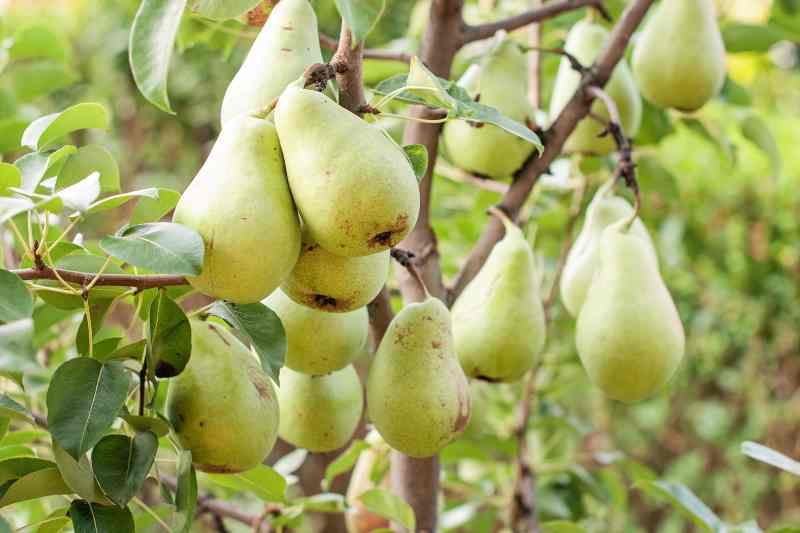
Different pear tree forms
Pear trees can be trained in several forms, each with specific pruning and maintenance requirements:
- High-stem : grafted on vigorous rootstocks, high-stem pear trees develop a trunk of about 1.80 m before forming a spreading crown. These imposing trees are perfect for large spaces. Pruning is limited, but harvesting may require a ladder.
- Low-stem : grafted on less vigorous rootstocks, these pear trees measure approximately 60 cm high before the crown. Easy to maintain and harvest, they suit small family gardens. Their lifespan is generally shorter than high-stem trees, but they produce more quickly.
- Espalier forms (palmette, cordon, U, double U) : ideal for small spaces or ornamental gardens, these forms require strict, regular pruning to keep their structure. They are very attractive and enable optimal production in a limited space.
- Spindle or vase : these semi-free forms suit modern orchards. Spindle has a conical shape, while vase offers an open crown, promoting light and air circulation. These forms are particularly suited to beginners thanks to their simple, effective maintenance.
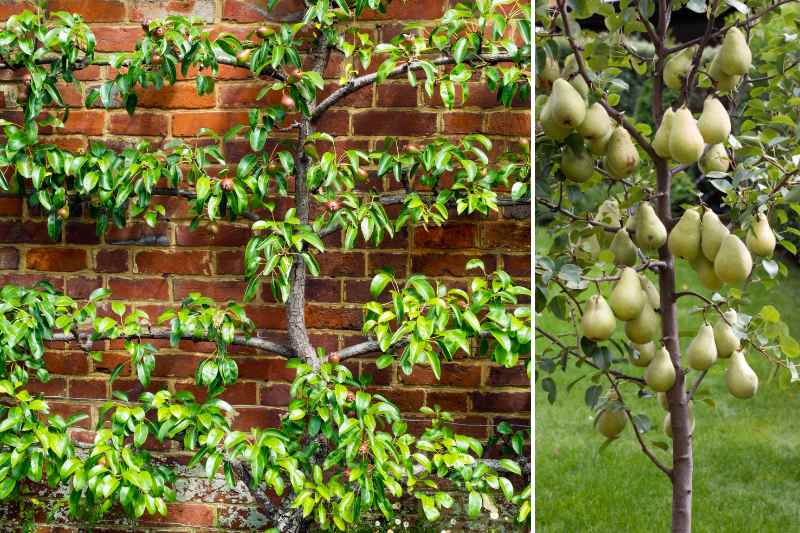
When to prune a pear tree?
Pruning a pear tree is carried out at two main times:
- In winter (formative or maintenance pruning)
- Between November and March, outside freezing periods.
- This pruning structures tree and prepares it for fruiting.
- In summer (green pruning)
- In June–July, to correct winter pruning and improve fruit ripening.
- It consists of thinning out unnecessary shoots to better aerate the crown and allow better sun exposure.
? Tip : Espalier or geometric forms require more pruning than a free-form pear tree. Observe tree carefully before starting.
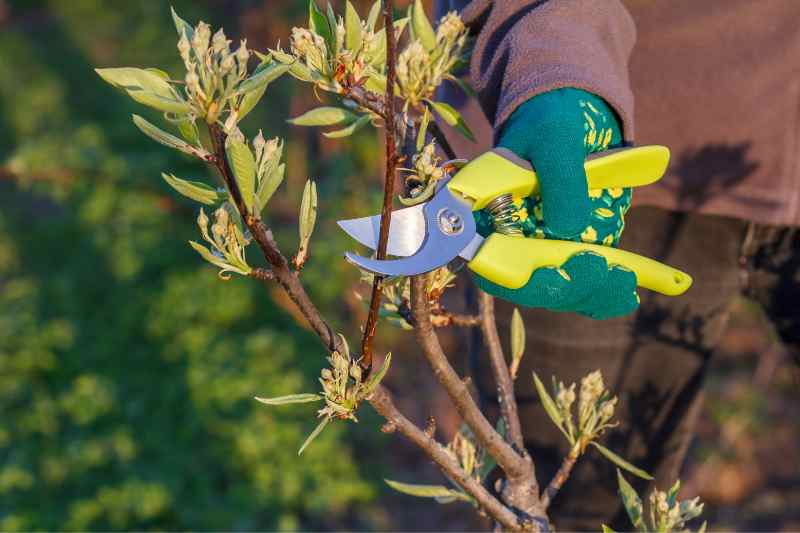
Keep an eye on weather!
Weather plays a key role in pruning success. Avoid pruning in freezing conditions or just before a significant drop in temperature: cold can slow wound healing and weaken exposed tissues.
Avoid humid periods as well, which increase risk of fungal diseases such as scab or fire blight.
?️ Prefer a mild, dry day with temperatures between 5 and 15 °C, to allow good wound healing.
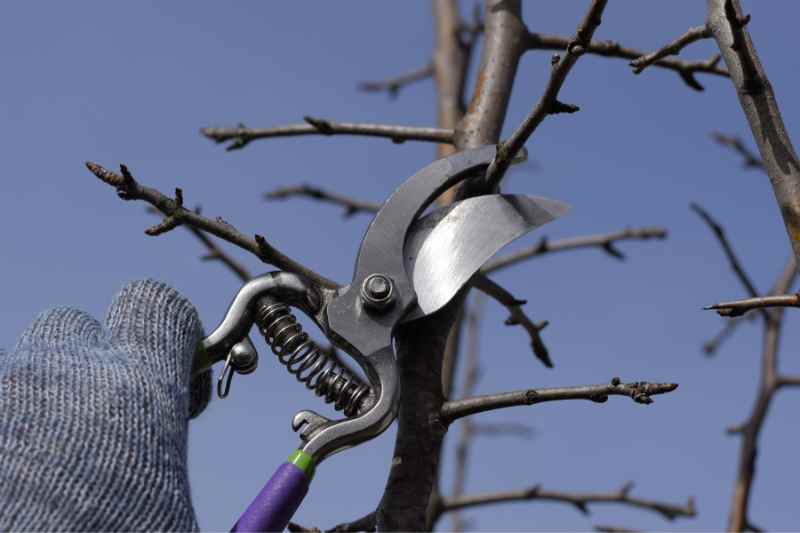
Necessary equipment
- Pruning shear : for fine branches.
- Tree pruning saw or branch cutters : for thicker branches.
- Gardening gloves : to protect your hands.
- Disinfectant : to clean tools between each tree (disease prevention).
Observing the tree
Before starting, take time to analyse tree to spot:
- Dead, diseased or broken branches.
- Shoots growing towards centre of the crown.
- Branches that cross or tangle with each other.
- Suckers at base of tree (from rootstock) and vigorous shoots (water shoots).
How to prune correctly?
- Fine branches : use pruning shear and cut just above an outward-facing bud to guide regrowth.
- Thick branches : use a tree pruning saw and make a clean cut, slightly angled, close to the collar, without damaging it.
- Clean your tools before and after each tree to avoid spreading diseases.
Not always easy to spot the right fruiting buds. To help, read Leïla’s guidance sheet: How to differentiate shoots and buds of fruit trees for successful pruning?
Formative pruning for young pear trees
For young pear trees, objective is to structure tree framework:
- Free-form (vase) :
- Select 3 to 5 main branches well distributed.
- Prune them to similar lengths for balanced structure.
- Espalier form (palmette, U, double U) :
- Prune regularly to maintain desired shape.
- Practice three-bud pruning: leave 3 buds per shoot to promote fruiting.
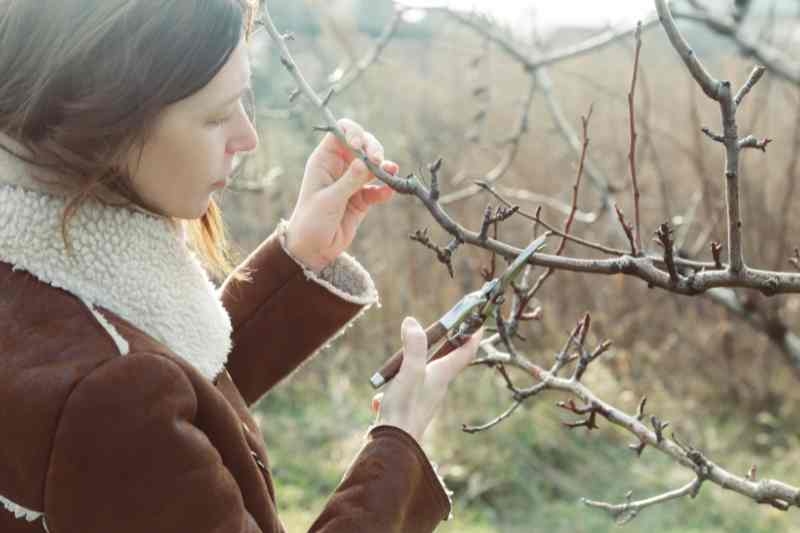
Maintenance pruning for adult pear trees
For mature trees, pruning focuses on maintenance:
- Remove :
- Dead, diseased or broken branches.
- Shoots crossing other branches or growing inward.
- Aerate crown :
- Prune lightly to allow light and air to circulate better.
- Always prune above an outward-facing bud.
- Keep fruiting buds :
- These buds are rounder and plumper than wood buds.
- Limit unnecessary cuts to preserve future harvest.
Summer pruning
In summer, a light prune corrects winter pruning:
- Pinch out or cut young green shoots to limit their growth.
- Remove non-fruiting shoots to better expose fruit to sun.
- Leave about 5 leaves after a fruit to encourage its development.
Find all François’s tips on summer pruning in our dedicated advice sheet.































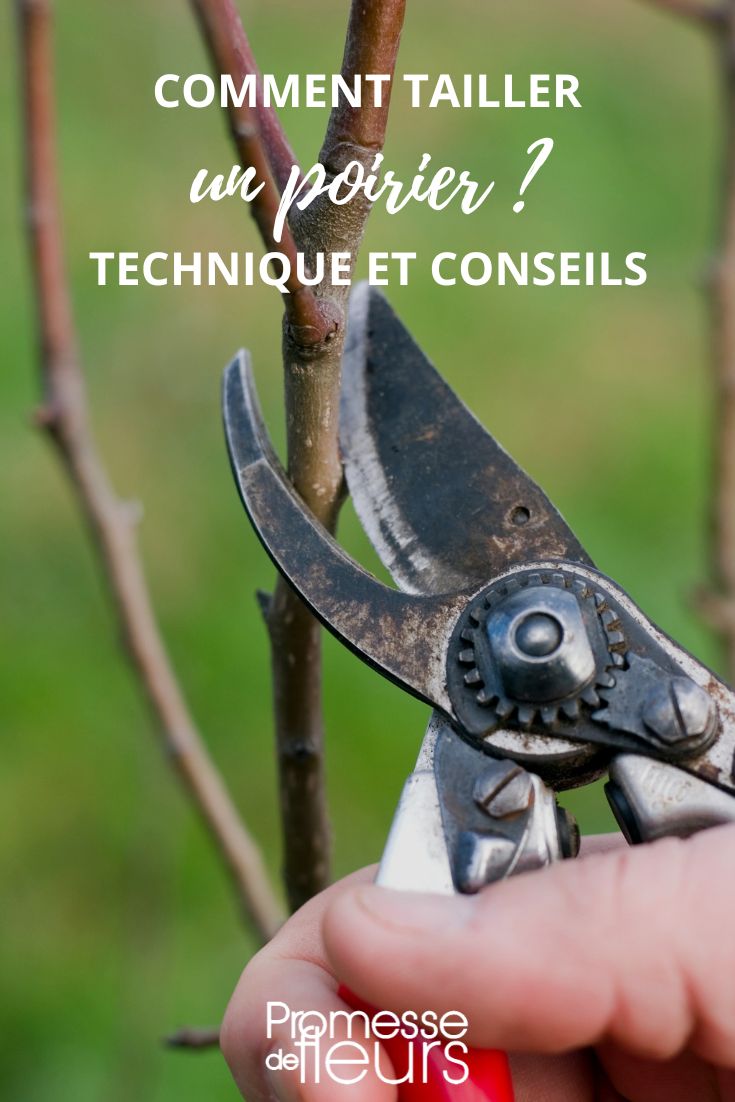
Comments